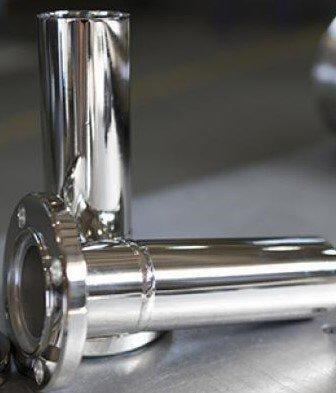
Preventing Corrosion with Stainless Steel When you think about the reasons that drive you to have a metal part or surface chemically treated, as with the electropolishing process, one of the main benefits that comes to mind is the ability of finished stainless steel to combat corrosion. At Control, we believe in the lifelong durability […]
Preventing Corrosion with Stainless Steel
When you think about the reasons that drive you to have a metal part or surface chemically treated, as with the electropolishing process, one of the main benefits that comes to mind is the ability of finished stainless steel to combat corrosion.
At Control, we believe in the lifelong durability of your electropolished stainless steel parts and surfaces, but if you haven’t yet arranged for your metal pieces to be treated, there are a number of measures you can take to maximize the lifespan of your unfinished stainless steel. However, we always recommend electropolishing for your next project to truly get the most out of your metal components. High-quality pieces make for high-quality results every time.
Preventing Corrosion of Stainless Steel
Why Does Corrosion Happen?
In order to effectively combat corrosion of your unfinished stainless steel metal parts and surfaces, it’s helpful to understand how and why the natural process of corrosion occurs. At its core, corrosion is simply the deterioration of the metal material as a result of environmental reactions and interactions. This process is often facilitated by a number of natural conditions, such as exposure to moisture or an oxidizing agent.
Corrosion is a deterioration of a material caused by environmental interactions. It is a natural phenomenon, requiring three conditions: moisture, a metallic surface, and an oxidizing agent known as an electron acceptor.
How to Prevent Corrosion of Unfinished Stainless Steel
The tips below for preventing rust and buildup on your unfinished stainless steel parts and surfaces offer guidance that any industry can find helpful for combating corrosion.
- Keep your stainless steel clean and dry, if possible.
- If your part is not involved in an abrasive action, prevent excessive scratching from occurring.
- Apply a protective chemical coating.
- Conduct regular maintenance of your stainless steel metal equipment, as per your industry guidelines.
- Arrange for electropolishing treatment to maximize the life and performance of your stainless steel.
How Electropolishing with Control Can Help
The electropolishing process works by removing free iron remnants from the surface of the stainless steel metal part or surface—essentially, the process is a chemical reaction that strips the outermost layer of the metal to reveal a richer, more resistant under-layer with much better passivation ability and increased cleanliness on a microscopic level.
This process is what makes electropolished metal parts and surfaces so distinctively shiny and durable, making it an attractive finishing choice for any project, application, or industry.
At Control Electropolishing, we’re confident in our ability to take on any project. Contact us today for more information on our electropolishing services or to arrange for a sample treatment.